Say hello to our China Student Tour from Hong Kong, which is very suitable for students from foreign countries who want to visit Southern China. Our itinerary is very tightly organized for the students. The students were able to visit more Chinese scenery and learn more about Chinese culture in a limited time. 13 Days China Student Tour from Hong Kong allows the students to get a clearer picture of China and its cities. During this tour, you will go to Hong Kong, Xiamen, Guilin, Yangshuo, and Shanghai. In Hong Kong, you can enjoy the charming scenery of its island, with typical leisure elements: sunshine, beaches, and sea waves; in Xiamen, you can look at the Chinese featured rural dwellings, Tulou. Does that sound great? More details about our China Student Tour to Shanghai are offered below this page. Let’s have a look!

Welcome to join the 13 Days Hong Kong student tour. On the first day, our tour guide will pick you up at the Hong Kong airport and transfer you to the hotel.
With a population of about 7.5 million, Hong Kong is a Chinese Special Administrative Region in southern China. It is a highly prosperous free port and an international metropolis where Chinese and Western cultures blend. It is also known as the “Pearl of the Orient” and a paradise for food and shopping.
Today we will visit Nanlian Garden and Chilin Nunnery after breakfast. Covering an area of 3.5 hectares, Nanlian Garden uses a distinctive wood structure, with many bizarre rocks placed and ancient trees planted in the garden. It also has a vegetarian food restaurant, souvenir shop, Chinese teahouse, and multi-function room to meet the needs of different visitors. You can visit the Chinese Timber Architecture Gallery in Nanlian Garden. It displays the scale models of precious wooden architecture relics and shows the development and changes of Chinese traditional architecture.
Then the next stop is Chilin Nunnery, which is about 500 meters far from Nanlian Garden. It was built on the mountain in 1936 and occupies an area of more than 30,000 square meters. Its main buildings are modeled after the architectural style of the Tang Dynasty (618 - 907 AD). You can go to the northeast of Chilin Nunnery to see the Wanfo Pagoda, which has collected more than ten thousand Buddha statues. From the outside, it has seven layers of square eaves. Here is indeed a serene place to empty your mind and replenish yourself.
After that, we will take the Peak Tram up to Victoria Peak, a top tourist attraction on Hong Kong Island. Peak Tram is a kind of transportation with sightseeing value to reach the top of the mountain Victoria Peak. You can get there in 7 minutes by taking the Peak Tram at the Garden Road terminal. If you want to have a better view of this place, remember to choose the right seat near the platform.
At an altitude of 554 meters, Victoria Peak has always been the first focus and a symbol of Hong Kong. It is also the best place to overlook the scenery of Victoria Harbor and the most famous luxury residential area on Hong Kong Island. Around 1868, the governor of Hong Kong chose here to build summer villas to enjoy the cool and pleasant living environment of Victoria Peak. As a result, moving to Victoria Peak had gradually become a prevailing custom praised by the rich and famous. In 1904, living in Victoria Peak was officially listed as an exclusive right of the upper class and foreign embassies, which showed the extraordinary position of the Victoria Peak. Until 1947, this rule was abolished. Today, Victoria Peak attracts over 7 million tourists each year and has become an extremely popular tourist attraction in Hong Kong.
Then we will go to the Peak Tower, which is at the top of Victoria Peak, and its top floor, the Sky Terrace 428. Designed by the British architect Terry Farrell, the Peak Tower is a seven-story building with a total area of 10,400 square meters. The Peak Tower is also a terminal of the Peak Tram, providing sightseeing, entertainment, shopping, and food experience. Then we move to its top floor. The number in name of the Sky Terrace 428 means the highest point here is 428 meters above sea level. When you get here, you can enjoy the picturesque scenery at all sides of the mountain: skyscrapers full of infinite dynamism in Hong Kong Central, the world-famous Victoria Harbor, and so on.
Next, we will visit Repulse Bay, the most representative bay in Hong Kong, China. Despite its name, Repulse Bay has a fine beach surrounded by palm trees. Its shallow seawater allows visitors of all ages to enjoy themselves. Beach facilities here from changing rooms to shower rooms are first-class. You can go to the beach to enjoy the sunshine and sea view. Sitting on the beach, you will see many mothers and children enjoying their time, as well as tourists who come here for a one-day tour.
Then we will come to Tin Hau Temple behind Repulse Bay. Back to the mountain and face to the sea, Tin Hau Temple seems to occupy a small area, but there are many statues of Tin Hau, Guanyin (a Buddhism Goddess), and mythical creatures. Tin Hau is also called Mazu (or Matsu), the Chinese patron goddess who is believed by many boatmen, sailors, and fishermen. She was born in Fujian Province in 960. Growing up on the shore of the sea, Mazu is also well versed in astronomy and meteorology. She can also predict the weather changes and tell the shipowners in advance whether they can set sail. Once a government official was leading a fleet of ships on a diplomatic mission to Korea. The calm sea suddenly raised strong winds and waves, engulfing the ships one after another. In the panic, the official saw a goddess appeared on the mast, stabilized the ship, and saved him. Later, the official knew that was Mazu, who saved his life. He returned to the capital and reported the Mazu’s story to the emperor. So, the emperor made Mazu a nationally respected goddess to thank her great deeds. Now, she is widely worshiped in the southeast coastal regions of China.
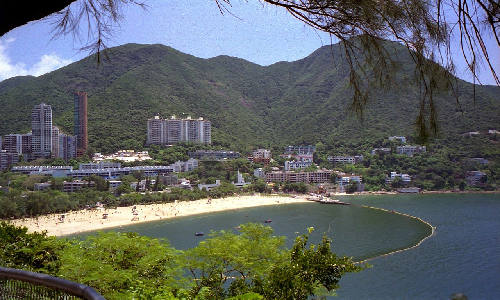
 Xiamen
Xiamen After breakfast, we will check out from the hotel and head for Lantau Island. Lantau Island, located in the west of Hong Kong, is the largest island in Hong Kong, with an area of 147 square kilometers. We will drive to Ngong Ping, which is in the southwest of Lantau Island. And we will go to the Ngong Ping Village, the market on the top of the mountain, by taking the Ngong Ping 360 Cable Car. Sitting in the comfortable and quiet standard cabin of the Ngong Ping 360 Cable Car, you can see the Hong Kong International Airport, the beautiful scenery of Lantau Island, and the Ngong Ping plateau. When you arrive at Ngong Ping Village, you will feel its customs and culture.
Then we will visit Po Lin Monastery and Big Buddha. Po Lin Monastery, founded in 1906, has become a place of interest in Hong Kong after 100 years of development. Apart from some of the original dwellings, there are tranquil gardens and Buddhist teaching rooms. Take a few steps and you will reach the terrace in the center of Po Lin Monastery Square. Looking southwest, you will find the world’s largest open-air bronze Buddha. This is Big Buddha, which is 26 meters high and 220 tons in weight. The project of building the Big Buddha takes 12 years.
After that, you will take the estimated flight MF382 16:20/17:40 to Xiamen. Then you will be transferred to the hotel in the downtown area of Xiamen.
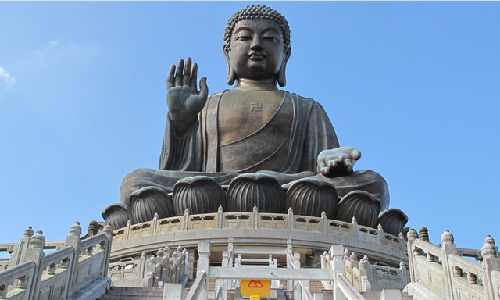

After breakfast, we will drive west from Xiamen’s downtown area to Nanjing Tulou in Fujian Province for about 3 hours (150KM). Nanjing Tulou deserves your visit when you come to Fujian Province because there are many famous sightseeing spots: Tianluokeng Tulou Cluster, Yuchang Building, and Taxia Village. Besides, Tulou is also called earth building, which is a kind of rural dwelling, particularly in Fujian Province. From the outside, you can see that the shape of buildings here is circular or rectangular, with black tiles on the roof and earth-yellow walls. These Tulous are dotted in valleys, riversides, and fields, forming a beautiful landscape. Among them, Tianluokeng Tulou Cluster stands out as an attractive complex of Tulous. It consists of five Tulous, one in the middle is a square building, surrounded by three round buildings and one elliptical building. You will find that these buildings are just like a full-blown five-petaled plum blossom. They are mainly made of soil and wood. Each has only one gate with a spacious patio. Kitchens, warehouses, and bedrooms are on the first floor to the third floor, respectively. Residents here have treated each other equally and living in harmony for hundreds of years.
Yuchang Building is in the northwest of Tianluokong Tulou Cluster. We will go there after lunch. Yuchang Building is the oldest existing Tulou which has been built for more than 600 years in Nanjing County. Affected by the rain and wind, its cloister pillars of the third and fourth floors incline clockwise, while those of the fifth floor incline anticlockwise, with a maximum inclination of 15 degrees. It’s amazing that it is still safe and stable and it has even experienced many earthquakes and numerous storms.
Let us walk into the traditional Chinese village: Taxia Village. First built in 1426, Taxia village now has more than 300 households. Many Tulous are built along the river and evenly distributed on both sides of the river. The conditions here are very suitable for developing high-quality agriculture. This village is also fertile in tea, red persimmon, bamboo, and other crops.
Then we will visit Chengqi Building. As such a quaint and huge Tulou, Chengqi Building is more like a castle. With an area of 5,376 square meters, this building is 73 meters in diameter, whose external wall is 229 meters in length. In addition, there is an interesting story about how huge Chengqi Building is. At a wedding banquet, two young women at the same table were arguing about which one of the Tulous they lived in is bigger. One said, “The Tulou I live in has 400 rooms and four stories. You tell me it is big or not!” The other replied, “The Tulou I live in is like a grand city. There are seven or eight hundred people in it. Three years have passed since I married here, and I have not known all the people in the building yet. So, I can’t say which one is the winner.” All the guests at the banquet laughed when it turned out that these two ladies both lived in Chengqi Building.
After that, we will come back to the hotel in Xiamen’s downtown area.

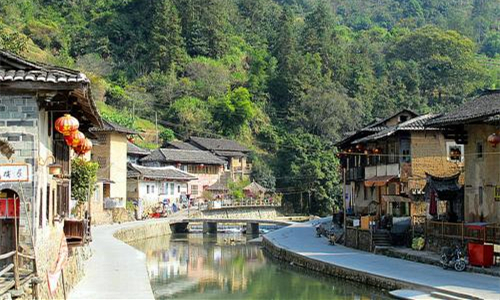
Today, after breakfast, we will drive to the pier and then take the ferry to Gulangyu Island. As a peaceful and beautiful island, Gulangyu Island is in the arms of a blue sea under an azure sky, occupying an area of 1.87 square kilometers. The eye-catching scenery of Gulangyu Island is created by nature’s uncanny craftsmanship. This island is characterized by emerald mountains, rugged reefs, meandering coastlines, and rolling hills. In addition, there are all kinds of buildings combined with Chinese and Western architectural characteristics, and a collection of shops and food stores.
Then, we will head for Sunlight Rock and Shuzhuang Garden, two popular tourist attractions of Gulangyu Island. It got its name because whenever the sun rises, the first ray of sun over the Gulangyu Island will shine here. At an altitude of 92.7 meters, Sunlight Rock is the highest peak of Gulangyu Island. Along with the steps by the rock, you will continue to climb up to enjoy the beautiful scenery along the mountain road. When you reach the highest point, you will have a panoramic view of the whole Gulangyu Island.
After that, we will visit Shuzhuang Garden. This garden was built in 1913. It is in the south of Gulangyu Island, leaning against Sunlight Rock and facing the sea. It was originally a private villa of the local gentry. In 1955, it was changed into a garden park.
After lunch, we will visit Nanputuo Temple, which is a famous Buddhist temple in Southern Fujian Province. The scale of the Nanputuo Temple is small. The main buildings here are the Hall of the Heavenly King, Daxiong Hall (or the Precious Hall of the Great Hero), Hall of Great Mercy, and Sutra Collection Pavilion. The Hall of the Heavenly King is the first hall of Nanputuo Temple. When you enter, you can see the figure of Maitreya Buddha (the successor of the founder of Buddhism). Therefore, The Hall of the Heavenly King here is also called Maitreya Hall.
Next, we will climb the mountain, Wulao Peak, which is behind Nanputuo Temple. It has five hilltops, each of them towering into the sky, sometimes surrounded by white clouds. From a distance, the five hilltops look like five seniors with white hair and whiskers. It will take you 50 to 60 minutes to walk from the foot to the top of the mountain. Along the mountain road, there are many observation platforms for the tourists to have panoramic views and take photos of Xiamen. At the top, you can see all the buildings of Xiamen University and overlook Gulangyu Island.
After the visit, you will be sent back to the hotel in Xiamen’s downtown area.
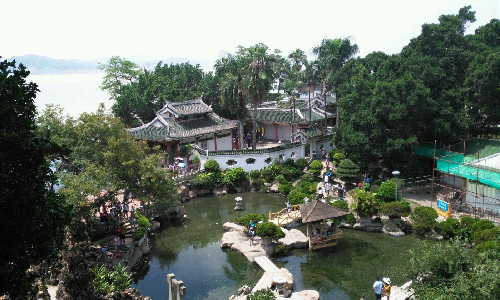
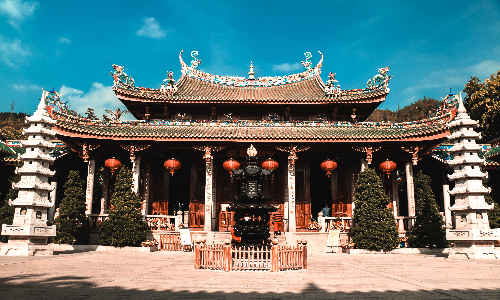
 Guilin
Guilin Today you will take the estimated flight MF8635 08:05/09:50 to Guilin City. Later at the airport of Guilin, you will meet your guide who will take you to have lunch.
After lunch, we will visit Elephant Trunk Hill, which is one of the essences of Guilin’s scenery. Elephant Trunk Hill named for its resemblance to an elephant. Because of its unique shape and profound history, it was designed as the Guilin City Emblem in 1995.
Then, we will go to Reed Flute Cave, which is about 5 KM away from the urban area of Guilin. It has experienced a quite long period before it has today’s appearance and beauty. One million years ago, Reed Flute Cave was an ancient underground lake. The crustal movement made the underground water drop, and this underground lake turned into a cave. Stepping into the Reed Flute Cave, you will see an underground palace composed of bizarre stones. There are vivid stalactites, stone columns, stone curtains, and stone flowers, forming various attractions, including “Snowman”, “Primeval Forest”, “Crystal Palace”, and so on. Moreover, the cave’s lighting design has been improved with the help of modern science and technology. The multi-colored lights present a dynamic lighting show, adding glamor to this cave.
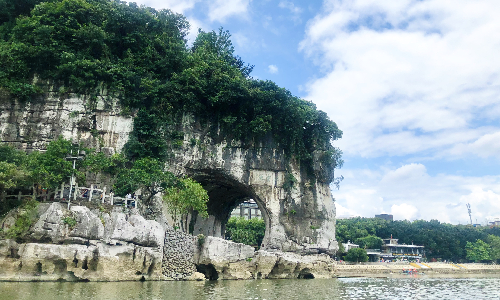
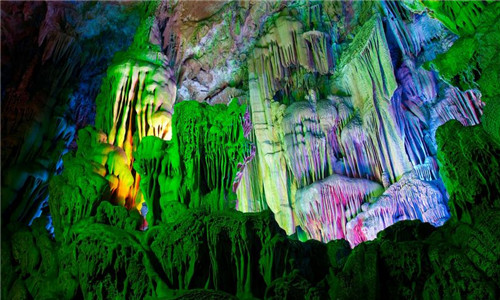
 Yangshuo
Yangshuo Guilin
Guilin After breakfast, we will drive southeast for about 1 hour (35KM) from Guilin’s downtown area to the Mopanshan Pier. Then, we will board the Li River Cruise Ship and start our student tour to Li River (about 4 hours; lunch included). Li River is the essence and heart of Guilin’s scenery. Looking out from the viewing area of Li River Cruise Ship, you will find that peaks are reflected on the lucid water. You can also see shepherd boys singing and fishermen fishing leisurely – everything is so idyllic and poetic.
We will arrive at Yangshuo West Street around this afternoon. Yangshuo West Street, nearly 800 meters long, is the most prosperous street with marble pavement in Yangshuo. In Yangshuo, ancient pavilions, ancient temples, former residences of celebrities, and other ancient buildings are well preserved. Featured delicious food here includes Beer Fish and Tianluoniang (special-made snail used as food).
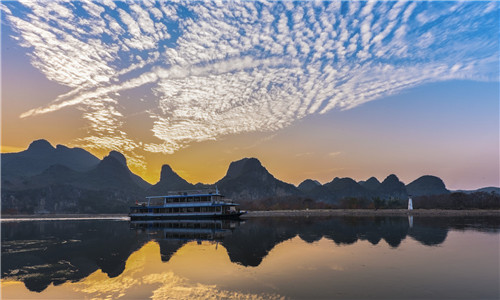
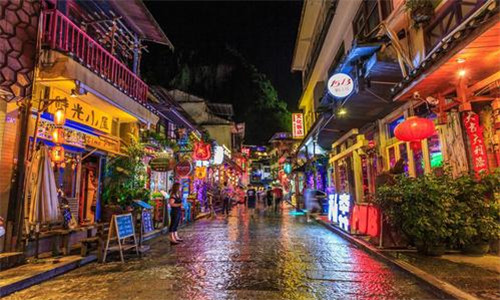
 Shanghai
Shanghai Today, the estimated flight MU8565 13:35/15:55 will bring you from Guilin to Shanghai after breakfast. Our tour guide will greet you at the airport in Shanghai as scheduled.
Then, we will go to Nanjing Road for sightseeing. The energetic Nanjing Road never seems to be quiet. It has been nearly 100 years since the opening of the first large department store on Nanjing Road. The Nanjing Road has always been a famous attraction for tourists to visit Shanghai from all over the world. As the symbol of the golden times of Shanghai, it carries the full feelings of the elderly Shanghainese.
After that, we will visit the Bund, which is an indispensable tourist spot in Shanghai. Here, you can find various styles of buildings, including the ancient Roman architectural style highly praised by many tourists. The famous buildings here include the Bank of China, Peace Hotel, and Shanghai Customs. Besides, there are also many squares on the Bund where you can find artificial waterfalls and water clocks.
After the tour, you will be transferred back to the hotel.
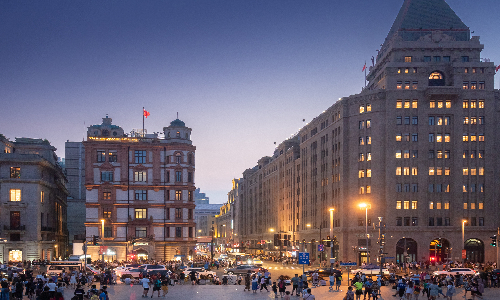
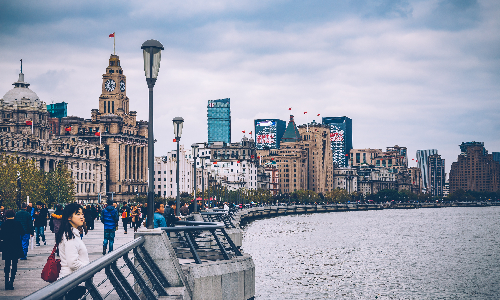
This morning, we will visit Yu Garden (closed on Mondays) after breakfast. Yu Garden, known as the most famous garden in southeast China, was first built in 1559. Right now, it has more than 40 ancient buildings such as Sansui Hall, Yangshan Hall, Huge Rockery, Wanhua Chamber, and Relic Hall. With fascinating scenery and magnificent scale, this garden is full of winding paths and corridors, antique pavilions, bridges, rockeries, and ornamental plants. Whenever you step into Yu Garden, you will always be attracted by the exquisite buildings.
Then we will go to see the Tea Ceremony at the Mid-lake Pavilion outside the front gate of Yu Garden. The venue of the Tea Ceremony is the Mid-lake Pavilion, which is a landmark for Shanghai people to drink tea. This ceremony is filled with elements of Chinese traditional culture, especially the tea culture. You can watch and personally experience the manual frying and other processes of tea-making. Under the guidance of the Tea Ceremony Staff, you can also explore the origin of tea, acquire tea knowledge, learn tea etiquette, and make a cup of tea by yourself. What’s more, you can select tea shops to purchase characteristic tea products. Feel the fun of Yu Garden!
Shortly, you will continue your Shanghai student tour and step on Shanghai Old Street, which is not far from Yu Garden. One hundred years ago, Shanghai Old Street was known to every household in Shanghai. People loved to patronize places on this street, such as restaurants, theatres, banks, silverware shops, and business firms. Today’s old street still retains many China time-honored brands. Among them, the most popular Chinese restaurant is Songyue Building. Songyue building, founded in 1910, is the oldest vegetarian restaurant in Shanghai. It boasts a world-renowned reputation for its first-class cooks, high-quality ingredients, and adherence to vegetarian dishes. The specialty of this restaurant is Emerald Vegetable baozi (a steamed bun stuffed with dried bean curd, shitake, and other green vegetables). The color of this kind of baozi is emerald green because the ingredients of the bun skin contain spinach juice. Customers who have tried Emerald Vegetable baozi give great feedback for its beautiful appearance, delicious taste, and balanced nutrition. You will definitely enjoy the food here.
After lunch, we will visit Tianzifang Market, a commercial street about 6 KM from Yu Garden. Formed in the 1920s, Tianzifang Market preserves the typical Li Long (a kind of lane in Shanghai) style architectural layout in Shanghai. Here, galleries and artist studios can make you feel the fun of painting. Fashion clothes shops can let you appreciate chi-pao (a sheath with a slit skirt), scarf, and high-grade silk clothes. Restaurants that combine food and entertainment can give you the opportunity to try the delicious flavors of different countries and regions.
Our next stop is Shanghai Tower. The high-rise skyscrapers over 600 meters in the world can be counted on one’s fingers, and Shanghai Tower is one of them. As an unprecedented landmark with 119 floors and a total height of 632 meters of Shanghai, Shanghai Tower enhances the uniqueness and recognition of Shanghai. You will take the fastest elevator in the world to reach the observation deck on the 119 floors within 56 seconds. Here, you will have a panoramic view of Shanghai city.
After all the tours today, we will drive back to the hotel.
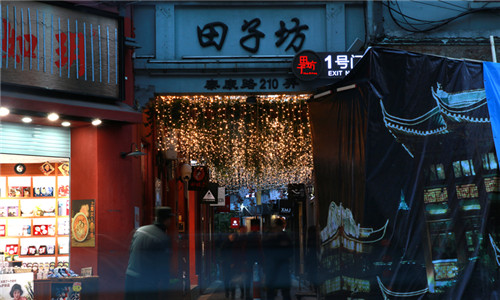
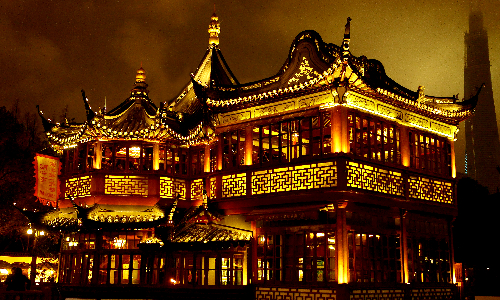
This morning we will start our day tour in Zhujiajiao Water Town after breakfast. About an hour’s (50KM) drive southwest will take us from the Bund to our destination, Zhujiajiao Water Town. This water town is divided into north and south areas by the river and is mainly connected by the Fangsheng Bridge. In Zhujiajiao Water Town, North Street is the most famous street of Ming and Qing Dynasties (1368 - 1912) in Shanghai. While walking through this street, you will find many local specialties: pig hooves, zongzi (a rice dumpling), smoked beans, and a motley variety of Chinese pastries. These foods will make your mouth watery even you are not hungry. In addition, we will take a wooden boat for 10 to 15 minutes. Taking the short boat trip, you can enjoy the scenery of this water town, which is very pleasant.
Around noon, you can have lunch in Zhujiajiao Water Town. Then, we will drive northeast for about one hour (50KM) to Jing’an Temple in the west of Nanjing Road. Jing’an Temple was built earlier than Shanghai City. Occupying a total area of 22,000 square meters, this temple is the oldest Buddhist temple in Shanghai. The major buildings here are the Great Buddha’s Hall, Hall of the Heavenly King, and Hall of Three Gods. The Great Buddha’s Hall is 26 meters high with 46 carefully crafted teakwood columns. The roof of this hall is covered with copper tiles. When you enter this hall, you will see a statue of Sakyamuni (the founder of Buddhism) made of 15 tons of pure silver. If you want to know the story of this statue, you can ask your guide for help.
We will go back to the hotel in the Shanghai downtown area after the visit.
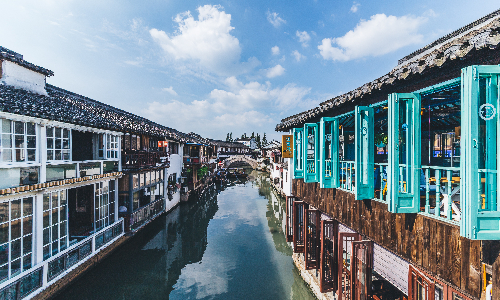

 Suzhou
Suzhou Shanghai
Shanghai This morning, our guide will pick you up from the hotel in the Shanghai downtown area. Your student tour to Suzhou begins right away when you finish your breakfast. You will take the estimated train G7268 08:05/08:37 to Suzhou. Of course, our guide will welcome you at the railway station of Suzhou.
Then, we will visit Humble Administrator’s Garden. With a history of more than 500 years, Humble Administrator’s Garden is the largest existing classical garden in Suzhou. This garden is divided into three parts: the east garden, the central garden, and the west garden. In the central garden, the Mountain-In-View Tower is a representative building surrounded by picturesque scenery. On the second floor of this tower, you can learn an interesting story about this garden. Date back to the Eastern Han Dynasty (25 - 220), a petty official in charge of the local market stayed on the second floor of the Mountain-In-View Tower. By chance, he found an old man selling small things on the street corner near the Mountain-In-View Tower. There was a gourd hanging beside the old man. The old man jumped into the gourd at night and came out of the gourd in the morning. The petty official was amazed and eager to see what was inside the gourd. So, he bought liquors and meat to visit the old man. Moved by the sincerity of the petty official, the old man agreed to bring him together into the gourd after the sunset. After entering the gourd, the petty official opened his eyes and saw a brand-new world: sun, moon, and stars, bizarre flowers and plants, scattered pavilions, and carved fences and buildings. He stayed in the gourd with the old man for more than 10 days to learn medical skills and fortune-telling. When he came out of the gourd and returned to his hometown, his family was shocked and thought he had already died. It turned out that more than ten years had passed. From then on, he used the knowledge he acquired to help the people in his hometown to cure all diseases and drive away bad lucks. It is said that the scenery inside the gourd is just like that of the Humble Administrator’s Garden.
Then we will move to Pingjiang Road, an ancient and historical street in Suzhou along the river. This historic district has made a great contribution in protecting the ancient city and the historical features of Suzhou. Here, you can enjoy the natural environment, folk customs, and cultural accumulation of Chinese traditional villages.
After lunch, we will come to Tiger Hill. About 5 KM away from the urban center of Suzhou, Tiger Hill is about 36 meters high, with towering ancient trees and many tourist attractions. Relying on its beautiful scenery and long historical landscape, it welcomes numerous travelers every season.
Then, we will visit Suzhou No.1 Silk Factory, which is also a silk museum and exhibits the whole process of silk production. It shows a glorious history of more than 80 years of Chinese silk. Here, you can also see mulberry planting and silkworm cultivating, the processes of silk reeling production, and silk weaving production.
After the tour to Suzhou, you will be transferred to the hotel in Shanghai downtown area by taking the estimated train G7281 17:29/18:02 back to Shanghai.
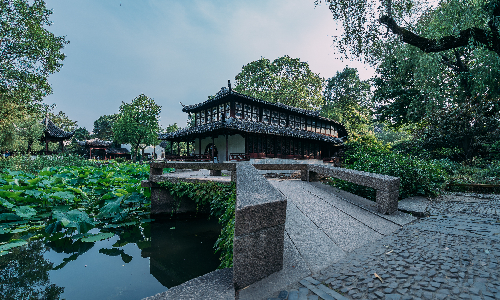
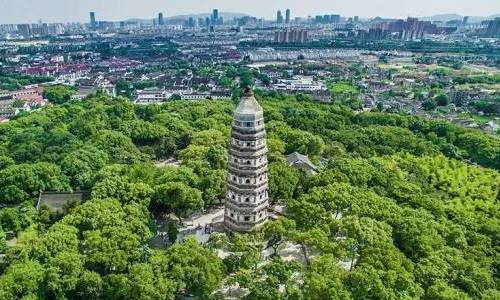
 Hangzhou
Hangzhou Shanghai
Shanghai Today we will drive southeast from Shanghai to Hangzhou for about 2.5 hours (180KM) after breakfast.
Then, we will visit West Lake, one of the main freshwater lakes in China. West Lake is a poem, a picture of nature, as well as a beautiful story. Such beautiful scenery here is also loved by many runners, so don’t be surprised to meet one runner after another along West Lake. We will take the West Lake Boat to enjoy the scenery of this lake from a different angle.
After lunch, we will go to Feilai Peak. With a height of 168 meters, Feilai Peak has many Buddhist rock cave statues. These statues are mainly scattered on the 500-meter-long cliff along the brook and in natural caves such as Qinglin Cave, Yuru Cave, and Longhong Cave.
Next, we will visit the Lingyin Temple behind the Feilai Peak. Lingyin Temple is an ancient Buddhist temple in China, occupying an area of about 87,000 square meters. Same as Feilai Peak, this temple is one of the representative historical sites of Buddhist culture.
Then, we will drive northwest back to Shanghai for about 2.5 hours (180KM).
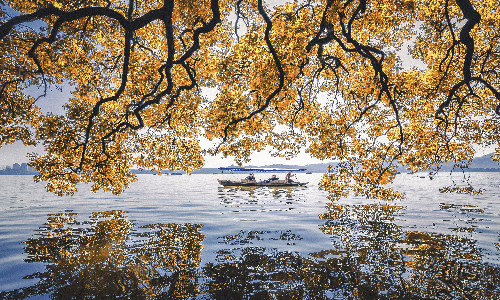
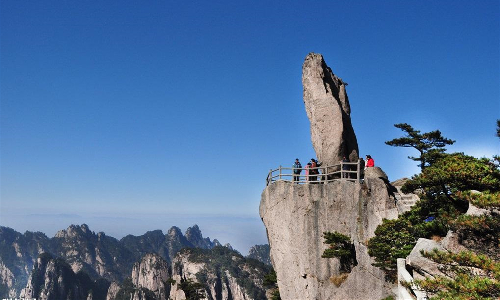
After breakfast, you will say goodbye to your 13 Days China Student Tour to Southern China. Our guide will take you to the airport according to your flight. We sincerely hope that you can have a good time during these 13 days! Thanks for choosing us!
Author: Yan Weiran
Proofreader: Lexie
| City | Five Star hotel list | Four Star hotel list |
|---|---|---|
| Hong Kong | Harbour Grand Kowloon | Harbour Plaza North Point Hotel |
| Xiamen | Jingmin Hotel Central Xiamen | Xiamen Huaqiao Hotel |
| Guilin | Lijiang Waterfall Hotel | Guilin Bravo Hotel |
| Shanghai | Ocean Hotel Shanghai | Courtyard by Marriott Shanghai Central |
 |
![]() About your child or infant, please contact us for a discounted price.
About your child or infant, please contact us for a discounted price.



We started with a few days in Beijing & ended in Shanghai, from where we visited the Forbidden City and Great Wall. In between we visited Terra Cotta Warriors Museum, Panda Base, Shanghai Disneyland.

We had a wonderful holiday in China which will remain long in the memory. China is a breathtakingly beautiful country full of splendid temples and palaces, mountains and rivers, peaceful rural scenes and bustling shopping streets.
 QUICK ENQUIRY
QUICK ENQUIRY